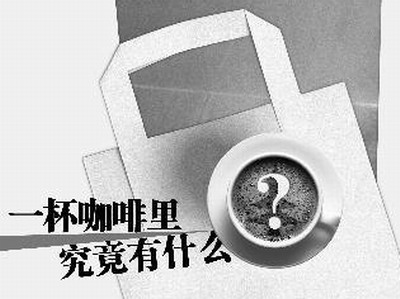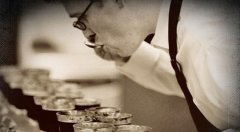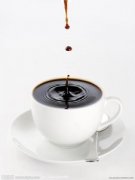Boutique coffee common sense what is in a cup of coffee?
According to Wired magazine reported on the 11th, many people like to drink coffee, in many countries, coffee is the best-selling drink, the global annual output of coffee beans reached a staggering 16 billion pounds. But specifically, do you know what substances are contained in a cup of coffee?

Now scientists have the answer:
Caffeine is actually an alkaloid phytotoxin (such as nicotine and cocaine) that stimulates us by blocking our sleep chemical adenosine receptors to keep us awake.
■ water
Hot water is a super solvent that releases aromas and oils from coffee beans. A good cup of coffee contains 98.75% water and 1.25% soluble plants. Caffeine is a diuretic, so people who start drinking coffee urinate quickly, but people who are addicted to coffee have a stronger ability to resist urination.
■ 2-ethyl phenol
It can make you wake up in the morning and smell like tar medicine. It is also one of the components of cockroach alarm information hormones that warn of dangerous chemical messages.
■ quinic acid
It gives the coffee a slight sour taste. In addition, it is a chemical of Tamiflu.
■ 3,5 dicaffeoylquinic acid
When scientists used this acid to interfere with neurons in the laboratory, they found that it could prevent some of the damage caused by free radicals to cells. Therefore, coffee is a good antioxidant.
■ dimethyl disulfide
A substance produced by roasting raw coffee beans, found only in the early stages of brewing coffee, is also a good thing and is one of the chemicals that give human faeces a smell.
■ acetyl methyl methanol
Acetyl methyl methanol is a flammable yellow liquid that helps give butter a smell and is an artificial seasoning in microwave popcorn.
■ putrescine
What makes spoiled meat so poisonous? The answer is right here. Putrescine is produced by the decomposition of amino acids by E. coli in meat. Putrescine is naturally found in coffee beans, and as you can guess from its name, it smells foul.
■ trigonelline
In terms of chemical structure, it is a folic acid molecule with a methyl group. Fenugreek alkaloids decompose to produce pyridine, which gives coffee a sweet earthy smell and prevents dental streptococci from clinging to your teeth. Therefore, coffee can inhibit oral bacteria.
■ nicotinic acid
Trigonelline becomes unstable above 160 degrees Fahrenheit and the methyl separates and releases vitamin B3. Two to three cups of espresso can provide you with half the daily recommended amount of vitamin B3.
Important Notice :
前街咖啡 FrontStreet Coffee has moved to new addredd:
FrontStreet Coffee Address: 315,Donghua East Road,GuangZhou
Tel:020 38364473
- Prev

The harm of instant coffee the production process of instant coffee
The first is essence: it starts with the production process of instant coffee. Instant coffee is produced by drying after extracting active ingredients from roasted coffee beans. In this process, some aromatic substances will inevitably be lost, so that the flavor and taste of the finished product is not as rich and pure as that of directly roasted coffee. The production process is generally as follows: pretreatment, roasting, grinding, extraction, concentration and drying, in which the pretreatment is
- Next

The new way of coffee set off a wave of whitening. Why can coffee be cosmetic?
Summary: caffeine is the core ingredient in coffee. Although it is controversial in the field of nutrition, caffeine is the main functional component of popular slimming skincare products. The extract of caffeine is added to the skin care formula and the effective ingredients that penetrate into the deep layer of the skin can stimulate the digestion and excretion of fat cells and reduce the bloated posture. More and more people like coffee.
Related
- Beginners will see the "Coffee pull flower" guide!
- What is the difference between ice blog purified milk and ordinary milk coffee?
- Why is the Philippines the largest producer of crops in Liberia?
- For coffee extraction, should the fine powder be retained?
- How does extracted espresso fill pressed powder? How much strength does it take to press the powder?
- How to make jasmine cold extract coffee? Is the jasmine + latte good?
- Will this little toy really make the coffee taste better? How does Lily Drip affect coffee extraction?
- Will the action of slapping the filter cup also affect coffee extraction?
- What's the difference between powder-to-water ratio and powder-to-liquid ratio?
- What is the Ethiopian local species? What does it have to do with Heirloom native species?

